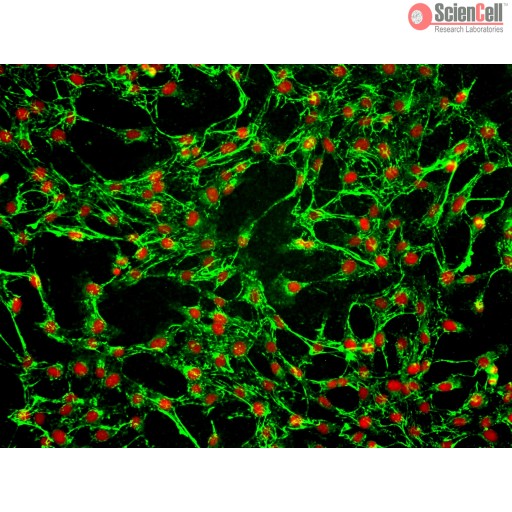
人气管成纤维细胞
产品名称: 人气管成纤维细胞
英文名称: Human Tracheal Fibroblasts
产品编号: 3430
产品价格: 0
产品产地: 美国
品牌商标: sciencell
更新时间: 2024-04-16T08:57:24
使用范围: null
- 联系人 : 胡小姐
- 地址 : 上海市宝山区长江南路180号A区401-406室
- 邮编 : 200433
- 所在区域 : 上海
- 电话 : 181****0148
- 传真 : 021-56760351
- 邮箱 : wwwfudan@163.com;hufangqiong@zqxzbio.com


Fibroblasts are mesenchymal cells which perform many vital functions during development and adulthood. Fibroblasts are responsible for the majority of the extracellular matrix synthesis in connective tissue and play major roles in wound healing. In the trachea, fibroblasts and epithelial cells interact in order to respond to tissue injury, bacterial contamination, and other environmental factors [1]. Studies in vitro and in vivo show that tracheal fibroblasts (TrF) can promote tracheal epithelial regeneration by influencing epithelial cell proliferation and differentiation [2, 3]. Abnormal proliferation of Human TrF (HTrF) may lead to the development of airway diseases, such as asthma [1]. HTrF are a useful model for elucidating the mechanisms of wound healing and may provide novel insights for tissue regeneration.
HTrF from ScienCell Research Laboratories are isolated from human trachea. HTrF are cryopreserved at passage one and delivered frozen. Each vial contains >5 x 10^5 cells in 1 ml volume. HTrF are characterized by their spindle morphology and immunofluorescence with antibodies specific to fibronectin. HTrF are negative for HIV-1, HBV, HCV, mycoplasma, bacteria, yeast and fungi. HTrF are guaranteed to further expand for 15 population doublings under the conditions provided by ScienCell Research Laboratories.
| Catalog No. | 3430 |
|---|---|
| Country of Manufacture | United States |
| Product Code | HTrF |
| Size/Quantity | >5 x 105 cells in 1 ml volume |
| Product Use | HTrF are for research use only. They are not approved for human or animal use, or for application in in vitro diagnostic procedures. |
| Storage | Upon receiving, directly and immediately transfer the cells from dry ice to liquid nitrogen and keep the cells in liquid nitrogen until they are needed for experiments. |
| Shipping Info | Dry ice. |
| References | [1] Evan M, Fanucchi M, Van Winkle L, Baker G, Murphy A, Nishio S, Sannes P, Plopper C. (2002) "Fibroblast growth factor-2 during postnatal development of tracheal basement membrane zone." Am J Physiol Lung Cell Mol Physiol. 283(6): L1263-1270. [2] Kobayashi K, Nomoto Y, Suzuki T, Tada Y, Miyake M, Hazama A, Kanemaru S, Nakamura T, Omori K. (2006) "Effect of fibroblasts on tracheal epithelial regeneration in vitro." Tissue Eng. 12(9): 2619-2628. [3] Goto Y, Noguchi Y, Nomura A, Sakamoto T, Ishii Y, Bitoh S, Picton C, Fujita Y, Watanabe T, Hasegawa S, Uchida Y. (2002) "In vitro reconstitution of the tracheal epithelium." Am J Respir Cell Mol Biol. 20(2): 312-318. |
